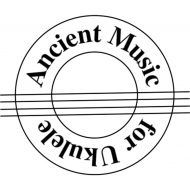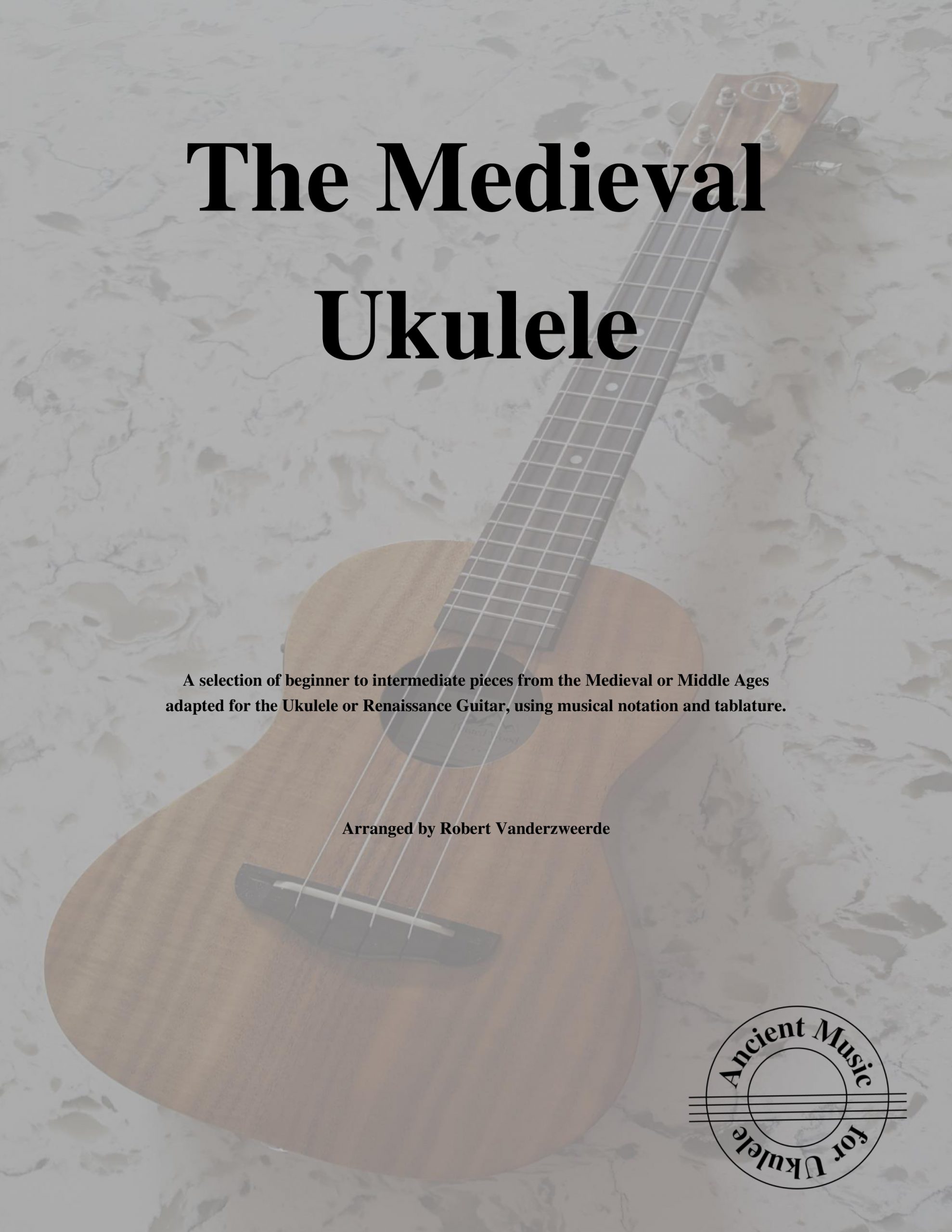The Medieval Ukulele is now available on Amazon and Kobo. Here are the explanations of the arrangements and links to the recordings so you can explore the music from the 5th to 15th centuries …
The Estampie is the first known genre of medieval era dance music, a popular instrumental and vocal form in the 13th and 14th centuries with a succession of repeated sections. The melody in a lively triple meter is monophonic (in soprano/alto range such as a recorder). However, the melody becomes polyphonic when accompanied by instrumentalists (in tenor range such as the crumhorn). They were played as entertainment for the wealthy during their feasts. https://youtu.be/zJuUqIpr3K
The Ductia as like the estampie but more regular. “The ductia is a melody that is light and brisk in its ascents and descents, and which is sung in carole by young men and girls, …. It influences the hearts of young girls and men and draws them from vanity, and is said to have power against that passion which is called love or ‘eros’.” (Johannes de Grocheio). https://youtu.be/zHtfU9zcmuw
This piece is my favorite … Canção do figueiral (Song of the fig-tree orchard) is celebrated as the oldest traditional song in Portuguese (about 12th century). https://youtu.be/cw9O3sTO0As
Most of the arrangements in this book are of songs. People who sang the secular songs of the middle ages were jongleurs or minstrels, first appearing around the 10th century. These actors, acrobats, fiddlers and singers moved from castle to castle.
A Troubadour is a composer and performer of Old Occitan lyric poetry during the High Middle Ages (1100–1350). The troubadour school or tradition spread to Italy and Spain. The texts of troubadour songs deal mainly with themes of chivalry and courtly love. Most were metaphysical, intellectual, and formulaic. Many were humorous or vulgar satires. https://youtu.be/dJFxSDy7ln8
There were three Formes Fixes of verse set to music between the late 13th and the 15th centuries. Each was also a musical form, generally a chanson, and all consisted of a complex pattern of repetition of verses and a refrain with musical content in two main sections. The rondeau is believed to have originated in dance songs.
Rondeau: https://youtu.be/Vg33EsgKg8g
Ballade: https://youtu.be/BXOLOUbWNfQ
Virelai: https://youtu.be/ASfyZg9e7Qo
A Chanson is in general any lyric-driven French song, usually polyphonic and secular. A singer specializing in chansons is known as a “chanteur” or “chanteuse”, and collection of chansons is a “chansonnier”. The earliest chansons geste were the epic poems performed to simple monophonic melodies. These usually recounted the famous deeds (geste) of past heroes, legendary and semi-historical. The chanson courtoise or grand chant was an early form of monophonic chanson, the chief lyric poetic genre of the trouvères. It was a song of courtly love, written usually by a man to his noble lover. A Burgundian chanson is a polyphonic French song of the late Middle Ages and Renaissance. The earliest chansons were for two, three or four voices, with first three becoming the norm. Sometimes, the singers were accompanied by instruments. https://youtu.be/UE4FTfIVLRQ
A Cantiga is a medieval monophonic song. Over 400 extant cantigas come from the Cantigas de Santa Maria, narrative songs about miracles or hymns in praise of the Holy Virgin. Derived from medieval dance forms, the 15th century Villancico was a type of popular song sung in the vernacular and frequently associated with rustic themes. With the decline in popularity of the villancicos in the 20th century, the term became reduced to mean merely “Christmas carol”. https://youtu.be/8j0Iy3-K-tQ
Coventry Carol was simply “Song 2” from the Pageant of the Shearmen and Tailors. It was named after the city of Coventry where theatrical performances about the theological mysteries of God’s creation were performed as early as 1392 until suppressed in 1579. https://youtu.be/siy0DaFPeKs


